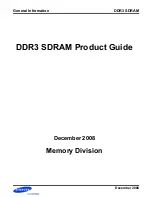
3-7
Note that if you configure to authenticate the users in the password mode, the command level available
to users logging in to a switch depends on both the
authentication-mode
password
command and the
user privilege level
level
command.
Configuration Example
1) Network
requirements
Assume that you are a level 3 AUX user and want to perform the following configuration for Telnet users
logging in to VTY 0:
z
Authenticate users logging in to VTY 0 using the local password.
z
Set the local password to 123456 (in plain text).
z
Commands of level 2 are available to users logging in to VTY 0.
z
Telnet protocol is supported.
z
The screen can contain up to 30 lines.
z
The history command buffer can contain up to 20 commands.
z
The timeout time of VTY 0 is 6 minutes.
2) Network
diagram
Figure 3-5
Network diagram for Telnet configuration (with the authentication mode being
password
)
3) Configuration
procedure
# Enter system view, and enable the Telnet service.
<Sysname> system-view
[Sysname] telnet server enable
# Enter VTY 0 user interface view.
[Sysname] user-interface vty 0
# Configure to authenticate users logging in to VTY 0 using the local password.
[Sysname-ui-vty0] authentication-mode password
# Set the local password to 123456 (in plain text).
[Sysname-ui-vty0] set authentication password simple 123456
# Specify commands of level 2 are available to users logging in to VTY 0.
[Sysname-ui-vty0] user privilege level 2
# Configure Telnet protocol is supported.
[Sysname-ui-vty0] protocol inbound telnet
# Set the maximum number of lines the screen can contain to 30.
[Sysname-ui-vty0] screen-length 30
# Set the maximum number of commands the history command buffer can store to 20.
[Sysname-ui-vty0] history-command max-size 20
# Set the timeout time to 6 minutes.
[Sysname-ui-vty0] idle-timeout 6
















































